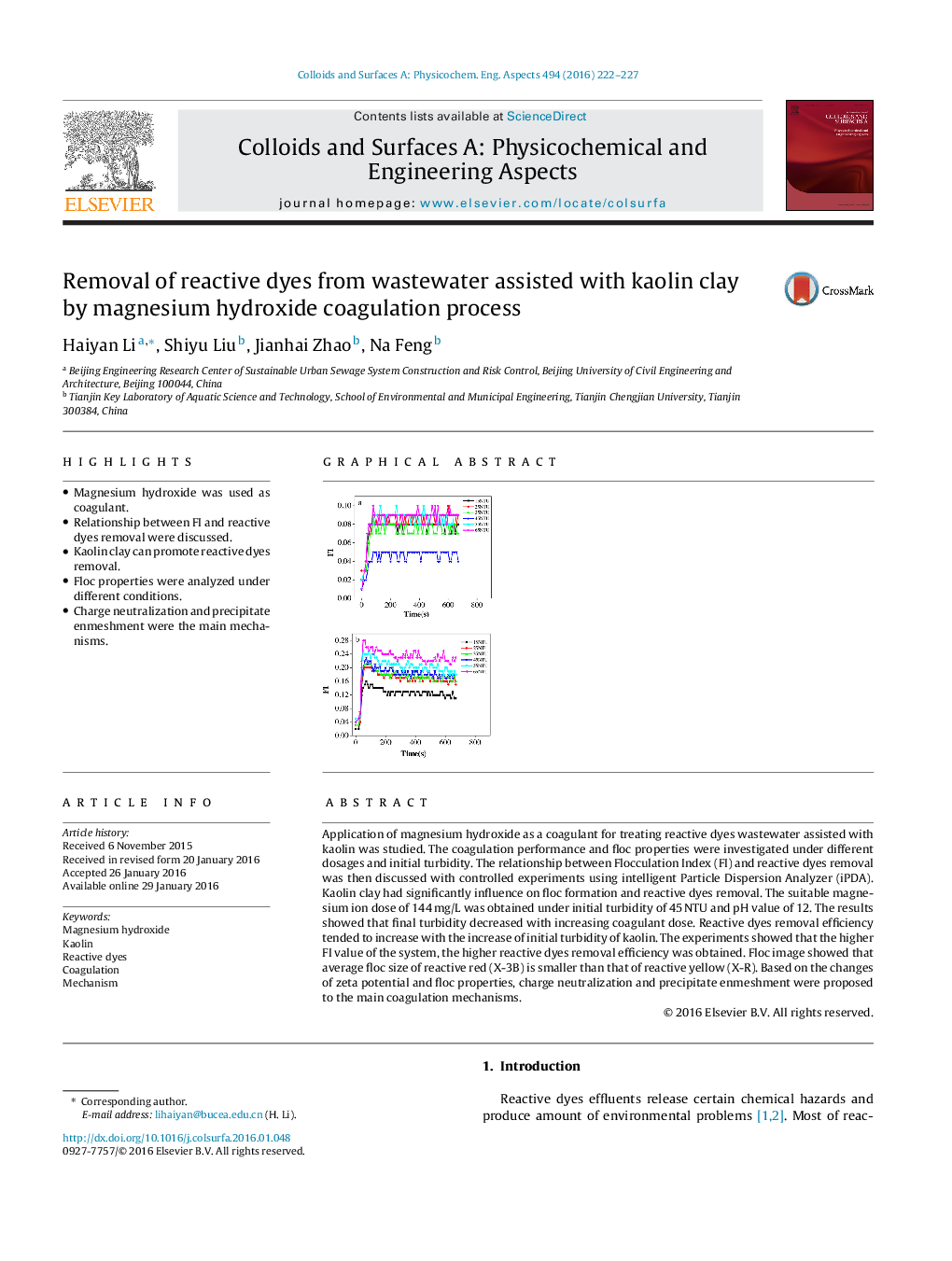| Article ID | Journal | Published Year | Pages | File Type |
|---|---|---|---|---|
| 591753 | Colloids and Surfaces A: Physicochemical and Engineering Aspects | 2016 | 6 Pages |
•Magnesium hydroxide was used as coagulant.•Relationship between FI and reactive dyes removal were discussed.•Kaolin clay can promote reactive dyes removal.•Floc properties were analyzed under different conditions.•Charge neutralization and precipitate enmeshment were the main mechanisms.
Application of magnesium hydroxide as a coagulant for treating reactive dyes wastewater assisted with kaolin was studied. The coagulation performance and floc properties were investigated under different dosages and initial turbidity. The relationship between Flocculation Index (FI) and reactive dyes removal was then discussed with controlled experiments using intelligent Particle Dispersion Analyzer (iPDA). Kaolin clay had significantly influence on floc formation and reactive dyes removal. The suitable magnesium ion dose of 144 mg/L was obtained under initial turbidity of 45 NTU and pH value of 12. The results showed that final turbidity decreased with increasing coagulant dose. Reactive dyes removal efficiency tended to increase with the increase of initial turbidity of kaolin. The experiments showed that the higher FI value of the system, the higher reactive dyes removal efficiency was obtained. Floc image showed that average floc size of reactive red (X-3B) is smaller than that of reactive yellow (X-R). Based on the changes of zeta potential and floc properties, charge neutralization and precipitate enmeshment were proposed to the main coagulation mechanisms.
Graphical abstractFigure optionsDownload full-size imageDownload as PowerPoint slide
